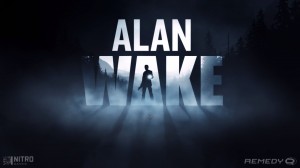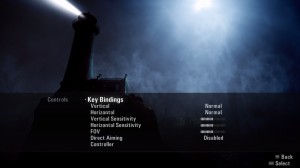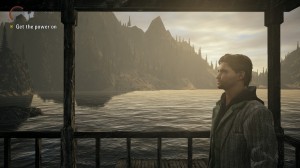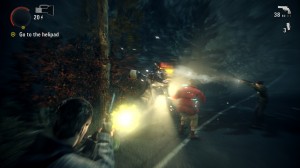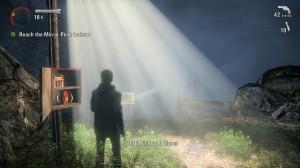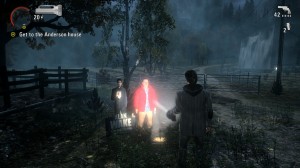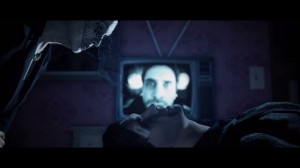“Alan Wake” is a psychological thriller / horror that reminds me a bit of the old “Silent Hill” games for the Playstation. As you may have guessed, you take control of a successful thriller writer named Alan Wake who is on vacation with his wife Alice. Like most games of this genre, things appear fairly normal from the start, save for a nightmare Alan has that educates the player on the gameplay mechanics. Unlike “Silent Hill” and “Resident Evil”, the game makes use of an ingenious lighting mechanic that ties in with the main story of the game. Oh, and thermoses…lots and lots of thermoses. I don’t know why there are so many thermoses lying around, but my eBay account is going to be busy tonight.
Editor’s Note: For the purposes of this review, it should be noted that I bought the “Alan Wake Franchise” which includes the collector’s edition and extras…not all of the below features may be accessible to a player who bought the standard game.
The main menu has a lot to offer, allowing users to create a new game, continue an existing one, choose episodes, adjust options, and view extras. The game is broken up into six main episodes, each containing roughly one or two hours of play time. Don’t worry, all of the episodes are included in the game and aren’t released over a period of time like Telltale has a tendency to do. The options menu contains all of your basics plus some neat bonuses like the ability to enable video commentary and subtitles. I’m pleased to report that controls are customizable as well. The extras menu allows the player to view their stats, listen to the soundtrack, read manuscripts they’ve found thus far in-game, watch cinematics, and etc. The soundtrack is my favorite feature, as I really enjoyed the music behind the game. There are also three difficulty level settings, which you can specify when starting a new game.
The setting is Bright Falls, a small town in the state of Washington. It doesn’t take long for the player to realize that not is all that is seems, though it does an excellent job in expanding on the characters that are on the story. It’s clear that each character has an in-depth profile and I cannot applaud the writers of this game enough for the excellent storytelling that occurs from beginning to end. To add to that experience, Alan narrates your progress as you play, giving you an insight into how the protagonist is feeling as you play.
From the get-go, you’re introduced to the importance of light. In fact, your main weapon will usually be a flashlight, accompanied by a some sort of firearm. Flashlights can be intensified at the cost of battery power, though batteries will recharge slowly over time and can be replaced with reserves that you may have on hand. The enemies in this game are called, “The Taken”, which are humans possessed by darkness. Disposing of them is a two-part process…the flashlight (or any light source) will weaken the enemy but in most cases, won’t kill them. Once the enemy is weakened, a firearm will be able to finish them off. Bullets won’t be able to harm “The Taken” until the light source has done its job. There are some weapons that do both (like flare guns) that can dispatch enemies in one shot, and powerful light sources like flashbangs are usually enough to save you the trouble from having to use ammo.
The game does a decent job in introducing you to each type of weapon, though these weapons are often lost once the scene has run its course. That’s right…no persistent inventory system. I can’t count the number of times Alan lost his gun, but this can be annoying if you’ve done a great job in conserving ammo. More often than not, you start clean at the beginning of a major scene, losing everything you’ve scrounged up. For this reason, it’s best to use ’em if you got ’em.
There are a few instances where you’ll have to participate in quick time events, but these are extremely easy. The most complicated thing I had to do was time my mouse clicks to start a generator. The majority of the game involves going from checkpoint to checkpoint (usually overhead lights that replenish your health), shining your flashlight on enemies before pumping them full of lead as you go. Some might see it as repetitive, but I found myself enjoying the combat nonetheless. There were a few points where the difficulty spiked unfairly, but checkpoints occur frequently enough and just at the right times to ensure that you don’t have to retrace a lot of footsteps.
I won’t go into the story so as not to ruin anything, but I found it to be fantastic. I couldn’t put it down and had to know what was going to happen next. I also discovered a “Twilight Zone” knockoff called “Night Springs” embedded in some of the televisions scattered throughout the game…they were entertaining to watch. Other televisions contained some very interesting plot twists that I won’t mention here, but if you’re like me, you’ll be scratching your head trying to piece together what you’re seeing.
Overall, I found “Alan Wake” to be an excellent game. A lot of work went into the details, from background noises and voices to the scenery and lighting effects. It’s a very beautiful game in terms of graphics, and I didn’t run into any sort of glitches or bugs. For a PC port, this was very well done. Considering that I don’t have a lot of luck with PC ports, this served to be a pleasant surprise. I bought the game during Steam’s Autumn sale for 75% off and was glad I did, though I’d easily pay its normal price tag of $29.99 to own it. If you enjoy a good psychological horror story and don’t mind an over the shoulder third person view, then I recommend that you pick this up.
Final Verdict: 9/10
—
You can check out gameplay videos here:
http://www.youtube.com/watch?v=RVgjp2lFmn4
—

